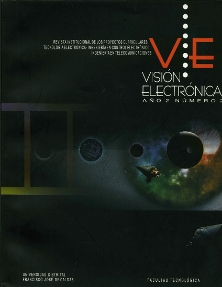DOI:
https://doi.org/10.14483/22484728.18381Published:
2018-08-13Issue:
Vol. 1 No. 2 (2018): Special editionSection:
A Research VisionEXPRO: exoskeleton for rehabilitation of upper limb
EXPRO: exoesqueleto para rehabilitación de miembro superior
Keywords:
Biomedical, Exoskeleton, Rehabilitation, Therapy, Upper limb (en).Keywords:
Biomédica, Exoesqueleto, Rehabilitación, Terapia, Extremidades (es).Downloads
Abstract (en)
In the upper limb rehabilitation field, assisting to various patients per day, in different kinds of therapies is an exhausting task which can be achieved in a semiautomated or automated manner. The ExPro is an exoskeleton of 3 degrees of freedom designed and created to support rehabilitation treatments for patients with little or no mobility in their arms. The device consists in a machine able to move forearm and wrist according to prone-supination, ulnar and radial deflection and flex-extension of wrist movements. The proposed prototype was designed to assist therapists in the first step of rehabilitation treatments, thus, passive therapies. Each mechanical component was designed in the Inventor 3D software and printed on PLA materials (polylactic acid). The controlling step is a Raspberry Pi 3 that receives information, interprets and connects power, and control PCBs. The design and calculations were tasted with the finite elements tool of inventor software. The work result presents an exoskeleton prototype easy to operate and transport, safe for the patient and able to carry out several preprogramed movements.
Abstract (es)
En el campo de la rehabilitación, asistir a varios pacientes por día en diferentes tipos de terapias es una tarea extenuante que puede ser llevada a cabo de manera semiautomatizado o automatizada. El ExPro es un exoesqueleto de tres grados de libertad diseñado y construido para asistir tratamientos de rehabilitación en pacientes con poca o nula movilidad en sus brazos. El dispositivo consiste en una máquina capaz de mover el antebrazo y la muñeca acorde a los movimientos de pronosupinación, flexión ulnar y radial y flexo-extensión de muñeca.
References
World Health Organization, “International Classification of Impairments, Disabilities and Handicaps”, 1980. [Online]. Available at: https://apps.who.int/iris/bitstream/handle/10665/41003/9241541261_eng.pdf?sequence=1&isAllowed=y
Departamento Administrativo Nacional de Estadística (DANE), “Información estadística de la discapacidad”, 2004. [Online]. Available at: https://www.dane.gov.co/files/investigaciones/discapacidad/inform_estad.pdf.
D. A. Tibaduiza, J. Grosso, N. Chio and M. Anaya, “Diseño de un Exoesqueleto Mecatrónico de Brazo Basado en Screws y Robots Paralelos”, Congreso Internacional de Ingeniería Mecatrónica - UNAB, vol. 1, 2009.
Z. Gao, X. Li, T. Peng, Z. Hu, J. Liu, J. Zhen and Y. Gao, “Systemic lupus erythematosus with Guillian-Barre síndrome”, Medicine, vol. 97, no. 25, 2018. https://doi.org/10.1097/MD.0000000000011160
J. F. Ayala, et al., “Mechanical design of an exoskeleton for upper limb rehabilitation”, Revista Colombiana de Biotecnología, vol. 17, no. 1, 2015. http://dx.doi.org/10.15446/rev.colomb.biote.v17n1.44188
G. Kwakkel, B. J. Kollen and H. I. Krebs, “Effects of robot-assisted therapy on upper limb recovery after stroke: a systematic review”, Neurorehabilitation neural repair, vol. 22, no. 2, 2008, pp. 111-121. https://doi.org/10.1177/1545968307305457
D. Sasaki, T. Noritsugu and M. Takaiwa, “Development of active support splint driven by pneumatic soft actuator (ASSIST)”, IEEE International Conference on Robotics and Automation, 2005, pp. 520-525. https://doi.org/10.1109/ROBOT.2005.1570171
R. Gutiérrez, P. Niño, O. Avilés, F. Vanegas and J. Duque, “Exoesqueleto Mecatrónico Para Rehabilitación Motora”, 8vo CONGRESO IBEROAMERICANO DE INGENIERÍA MECÁNICA, 2007.
A. Sledd and M. K. O’Malley, “Performance enhancement of a haptic arm exoskeleton”, 14th Symposium on Haptic Interfaces for Virtual Environment and Teleoperator Systems, 2006, pp. 375-381. https://doi.org/10.1109/HAPTIC.2006.1627127
K. Kiguchi, “Active exoskeletons for upper-limb motion assist”, International Journal Humanoid Robotics, vol. 4, no. 3, 2007, pp. 607-624. https://doi.org/10.1142/S0219843607001175
J. Perry, J. Rosen and S. Burns, “Upper limb powered exoskeleton design”, IEEE/ASME Transactions on Mechatronics, vol. 12, no. 4, 2007, pp. 408-417. https://doi.org/10.1109/TMECH.2007.901934
W. Chou, T. Wang and J. Xiao, “Haptic interaction with virtual environment using an arm type exoskeleton device”, IEEE International Conference on Robotics and Automation, 2004, pp. 1992-1997. https://doi.org/10.1109/ROBOT.2004.1308116
T. Nef, M. Mihelj and R. Riener, “ARMin: a robot for patient-cooperative arm therapy”, Medical & biological engineering & computing, 2007. https://doi.org/10.1007/s11517-007-0226-6
S. J. Lord and L. Cocchiarella, “Master the AMA Guides Fifth: A Medical and Legal Transition to the Guides to the Evaluation of Permanent Impairment”, Fifth Edition, AMA Press, 2001.
How to Cite
APA
ACM
ACS
ABNT
Chicago
Harvard
IEEE
MLA
Turabian
Vancouver
Download Citation
License
Copyright (c) 2018 Visión electrónica

This work is licensed under a Creative Commons Attribution-NonCommercial 4.0 International License.
1.png)
Attribution-NonCommercial 4.0 International






.jpg)





